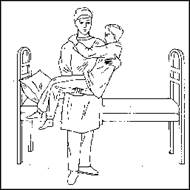Fig. 3. Semi sitting position of a patient in bed
It is better, if a ward is equipped with functional beds providing a patient with a more comfortable position. A functional bed consists of three mobile sections the position of which can be changed with the help of special adjusting devises or handles.
The bed grid should be well stretched and have an even surface. Above it there should be a mattress without bumps or hollows. Attending patients is facilitated by using a mattress consisting of separate parts, each of which can be replaced as and when necessary.
For patients with urinary and stool incontinence an oilcloth is fastened all along the width of the mattress-case to prevent soiling. The mattress-
case is covered with a bed sheet with its edges stuck under the mattress lest
its edges stuck under the mattress lest the latter should roll down or fold. Pillows are placed in such a way that the lower one (stuffed with feather) lies along the bed with its edges coming out a little from under the upper one (stuffed with down), which should rest against the head of the bed. Pillows are to be put in white pillowcases. Persons with an allergy for feather and down are given foam-rubber or wadded pillows. For covering patients cotton or woolen blankets are used depending on the season. Blankets should be dressed into blanket covers.
If functional beds are unavailable the patient can be put in a semi-sitting position by means of special headrests. At that a support is placed at the foot of the bed lest the patient should slip down from the headrest.
The patient’s bed should be done regularly, in the morning and in the evening, (the bed sheet and the blanket are to be spread, pillows are to be fluffed). If the patient cannot be overturned, special adaptations are used enabling the nurse to set the surface of the bed in appropriate order.
By the patient’s bed there should be a little table or a bedside-table the height of which should correspond to the height of the bed. For seriously ill patients special bedside tables are placed above the bed providing convenience for meals.
In every ward except for beds there should be chairs at each bedside, a table and a hanger for dressing gowns. At the door a thermometer indicating the air temperature should be hung, and a dustbin for collecting litter should stand.
Ward airing is carried out depending on the season. In the summer time netted windows are kept open day and night, during winter ventilating windows or transoms are opened 3-4 times a day for 15-20 minutes. In the latter case care should be taken to avoid drafts.
Transportation of patients
Patients can get to any branch on foot, in a wheelchair or on a stretcher depending on the doctor’s order. Means of transportation (wheelchairs, stretchers) are provided with bed sheets and blankets which should be changed after each use.
Patients who can move independently get from the admission department to the ward accompanied by the assistant nurse. In the division the patient is met by the ward (charge) nurse who gets acquainted with him and studies his case record, shows him the arrangement of the ward and location of the toilet and other rooms; she also informs him on the division mode. Then the nurse reports on the newly arrived patient to the doctor and gives him the patient’s case record. Depending on the patient’s state the doctor can examine him at once or during a round, he makes additional prescriptions, which the nurse is to execute. Patients who can’t walk are transferred to the division on a stretcher. The shift of the patient from the stretcher to the bed needs skillfulness and care: it is done by 2-3 medical attendants(fig. 5, 6).
If a bed regime is prescribed to a patient he’s transported to the diagnostic and medical offices as well as to the dressing or operating room in a patient transport trolley. A nurse should be able to transfer a seriously ill patient from his bed on a trolley and back in the correct way(fig. 4).

